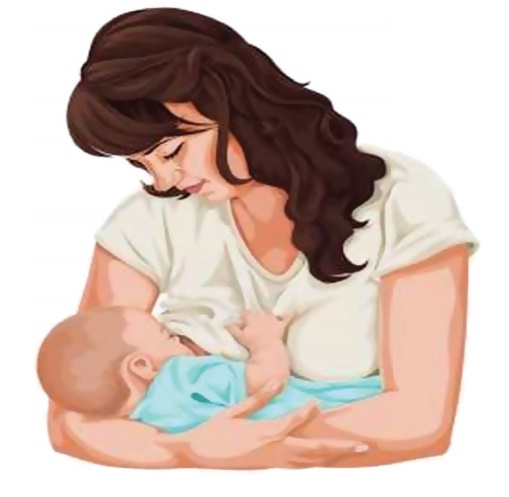Advantages, Techniques, Checking adequacy - Breast feeding | 12th Nursing : Chapter 5 : Child Health Nursing
Chapter: 12th Nursing : Chapter 5 : Child Health Nursing
Breast feeding
Breast feeding
Breast feeding should be initiated as soon as after birth of the
baby. A baby is usually alert immediately after birth which is the ideal time
to facilitate breast feeding. The baby will spontaneously seek the breast if it
is put on skin to skin contact with its mother’s body. Breast milk is the best
milk, suited for a newborn. It contains all the nutrients for the normal growth
and development of a baby from birth to first six months of life.

Exclusive Breast feeding
In exclusive breast feeding, the infant is given only breast milk.
Even the water is not given – with the exception of oral rehydration solution,
or drops/syrups of vitamins, minerals or medicines.
WHO recommendations on Breast feeding
Babies should be exclusively breast fed for the first 6
months of life to achieve optimal growth, development and health.
Thereafter, infants should be given complementary foods which are nutritionally
adequate and safe to meet their nutritional requirements,while continuing to
breastfeed for up to two years or beyond.
Advantages of Breast feeding
For babies
·
It is safe, clean and
hygienic
·
It is cheap and
available in correct temperature to the infant
·
It completely meets the
nutritional requirement of infants upto 6 months
·
It provides immunity to
the infants
·
It protects babies from
diarrhoea and respiratory infection
·
It is easily digestible
·
It promotes bonding
between the mother and infant
·
It prevents under
nutrition as well as over nutrition
·
It reduces the risk of
overweight and obesity in children
·
It increases the
Intelligence Quotient of the babies
·
It ensures food security
for the babies
For the mother
·
Breast feeding delays
next pregnancy
·
It lowers risk of breast
and ovarian cancer
·
It decreases mother’s
work load
For the family and society
·
Breast feeding saves
money
·
It promotes family
planning
It decreases the need for hospitalization
Reflexes useful for breast feeding
The following two reflexes are helpful for the babies in breast
feeding.
·
Rooting reflex: To find
the nipple and proper attachment to breast.
·
Sucking reflex: To draw
out milk from mother’s breast.
Types of Breast Milk
The breast milk secreted undergoes changes as the days goes on to
meet the demands of the baby.


Foremilk vs Hindmilk
The milk that is secreted when the baby initiates feeding is
foremilk whereas the milk that is secreted at the end the feed is hindmilk.
The foremilk satisfies the thirst of the baby whereas the hindmilk
which is high in fat provides satiety.
Techniques of breast feeding
Positioning
·
The mother is relaxed
and comfortable.
·
The baby’s head and body
are in a straight line
·
The baby’s face is
opposite the nipple and the breast
·
The baby’s upper lip or
nose is opposite the mother’s nipple
·
The baby is held or
supported very close to the mothers body
·
The baby’s whole body is
supported if the mother is in a sitting position
Attachment: It is otherwise known as latching. It means attachment of
nipple along with areola in baby’s mouth and not nipple alone.

Key points to good attachment
·
The mouth is widely open
·
The tongue is forward in
the mouth, and may be seenover the bottom gum
·
The lower lip is turned
outwards
·
The chin is touching the
breast
More areola is visible above the baby’s mouth than below it

Burping: After feed the baby should put on to the left shoulder of
the mother with its head supported and then with the right arm, the mother
should gently pat on the baby’s back. It avoids regurgitation.

Don’ts in Breast feeding
·
Avoid prelacteal feeds
·
Avoid bottle feed
·
Do not discard colostrum
·
Do not give water
Checking adequacy of breast feeding
The following indicates that baby is getting adequate breast milk.
·
Baby is passing urine
6-7 times a day
·
Baby is passing well
formed stools
·
Sleeping comfortably
after feed for atleast 2-3 hours
·
Gaining weight
adequately.
Related Topics